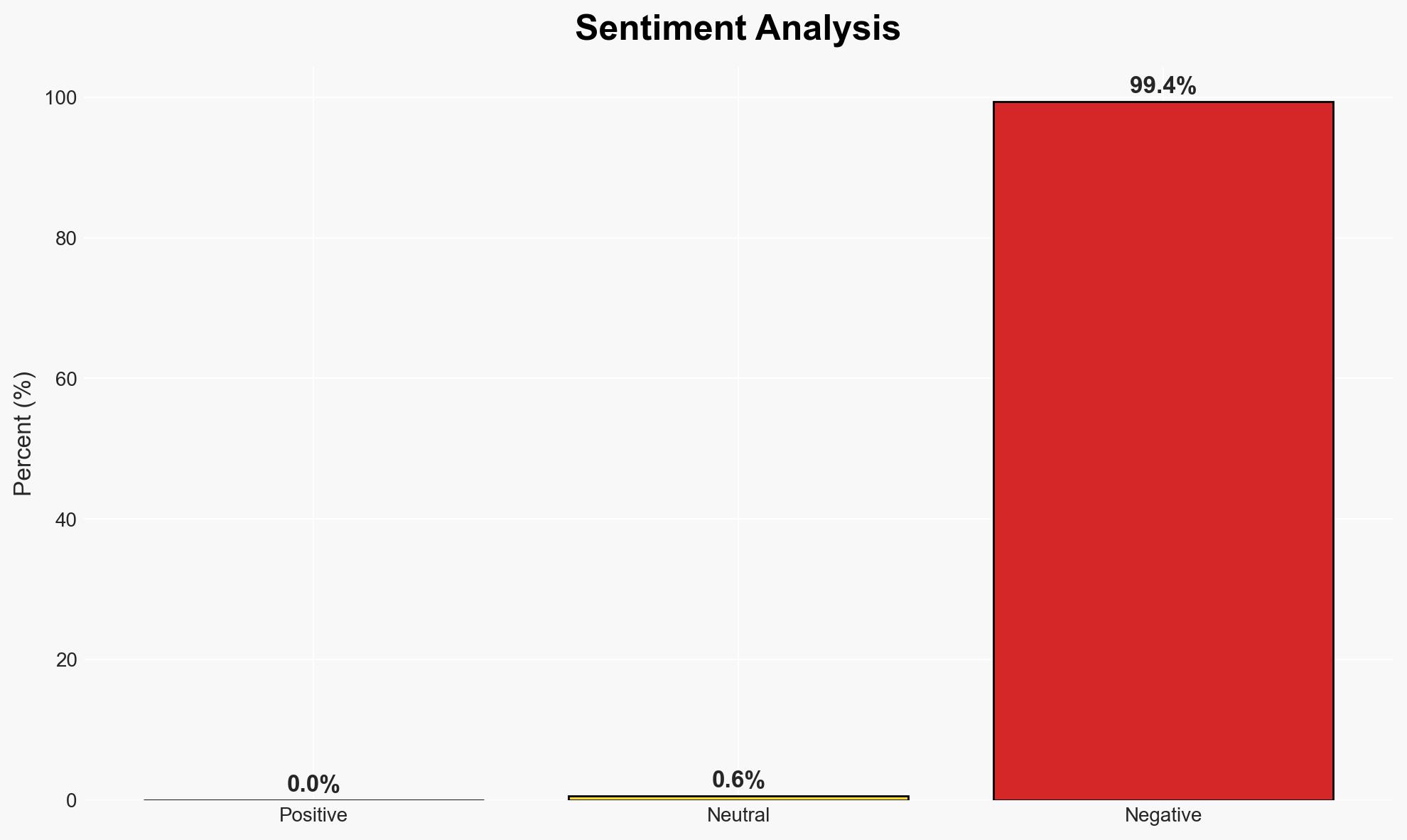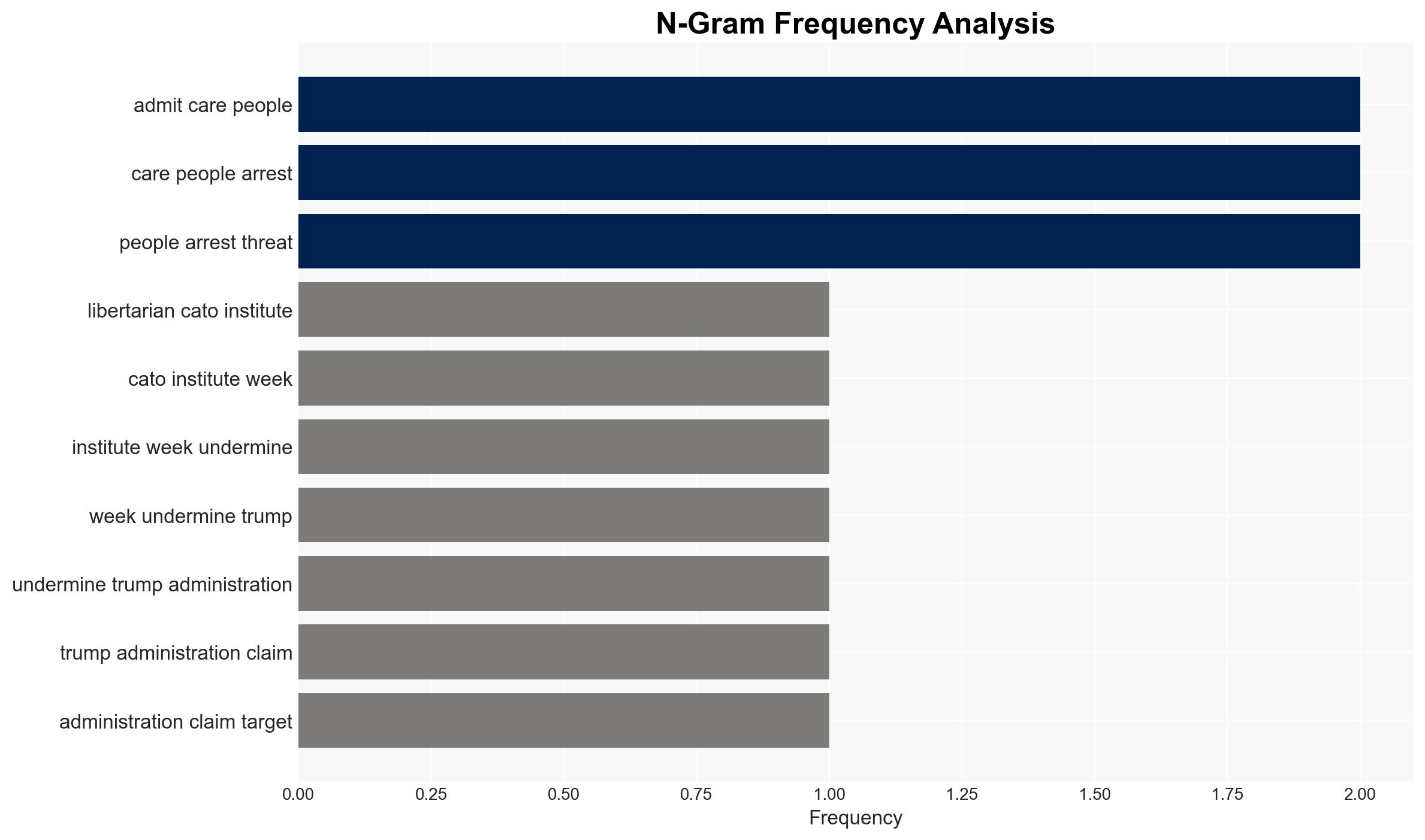Experts alarmed as new data challenges Trump’s immigration enforcement claims
Published on: 2025-11-27
AI-powered OSINT brief from verified open sources. Automated NLP signal extraction with human verification. See our Methodology and Why WorldWideWatchers.
Intelligence Report: ‘This is the scandal’ Experts floored as ‘staggering’ figures undercut key Trump pledge
1. BLUF (Bottom Line Up Front)
The report highlights discrepancies in the Trump administration’s claims regarding immigration enforcement, specifically the targeting of violent criminals. The data suggests a significant portion of those detained by ICE lack violent criminal convictions, challenging the administration’s narrative. This assessment is made with moderate confidence, impacting policy-makers and immigration enforcement agencies.
2. Competing Hypotheses
- Hypothesis A: The Trump administration’s immigration enforcement efforts primarily targeted violent criminals, as claimed. Supporting evidence includes public statements and policy directives. Contradicting evidence is the leaked data showing a majority of detainees without violent convictions. Key uncertainties include the completeness and accuracy of the dataset.
- Hypothesis B: The Trump administration’s immigration enforcement efforts were broader, targeting non-violent immigrants as well. This is supported by the leaked data indicating a high number of detainees without violent convictions. Contradicting evidence is limited to official statements from the administration.
- Assessment: Hypothesis B is currently better supported due to the leaked dataset and corroborating analysis from multiple sources. Indicators that could shift this judgment include additional data releases or credible refutations of the dataset’s validity.
3. Key Assumptions and Red Flags
- Assumptions: The dataset is accurate and representative; ICE’s public data aligns with internal records; the administration’s public statements reflect true policy intentions.
- Information Gaps: Verification of the dataset’s authenticity and completeness; insights into ICE’s internal decision-making processes.
- Bias & Deception Risks: Potential bias in data interpretation by advocacy groups; risk of data manipulation or selective release to influence public perception.
4. Implications and Strategic Risks
The revelation of discrepancies in immigration enforcement claims could lead to policy reassessments and impact public trust in government agencies. This development may influence future immigration policy and enforcement strategies.
- Political / Geopolitical: Potential for increased scrutiny and legislative action on immigration policies.
- Security / Counter-Terrorism: Minimal direct impact, but could influence resource allocation within DHS.
- Cyber / Information Space: Increased risk of misinformation and propaganda campaigns exploiting the data discrepancy.
- Economic / Social: Potential social unrest or advocacy movements demanding policy changes.
5. Recommendations and Outlook
- Immediate Actions (0–30 days): Verify the dataset’s authenticity; engage with ICE for clarification; monitor public and media reactions.
- Medium-Term Posture (1–12 months): Develop resilience measures to address potential misinformation; foster partnerships with credible data sources for ongoing analysis.
- Scenario Outlook: Best: Policy adjustments improve enforcement transparency. Worst: Data manipulation leads to public distrust. Most-Likely: Continued debate with gradual policy refinement.
6. Key Individuals and Entities
- David Bier (Cato Institute)
- Tricia McLaughlin (DHS Spokesperson)
- Yassamin Ansari (Congresswoman)
- Chris Murphy (Senator)
- Aaron Reichlin-Melnick (American Immigration Council)
7. Thematic Tags
Structured Analytic Techniques Applied
- Cognitive Bias Stress Test: Expose and correct potential biases in assessments through red-teaming and structured challenge.
- Bayesian Scenario Modeling: Use probabilistic forecasting for conflict trajectories or escalation likelihood.
- Network Influence Mapping: Map relationships between state and non-state actors for impact estimation.
Explore more:
National Security Threats Briefs ·
Daily Summary ·
Support us





